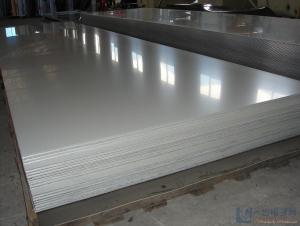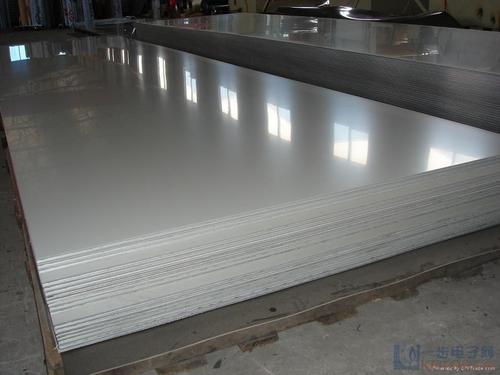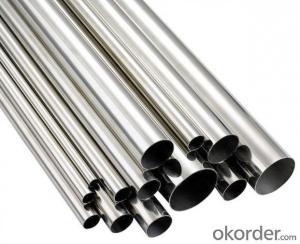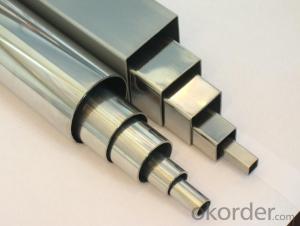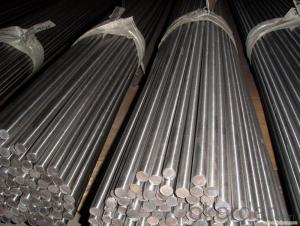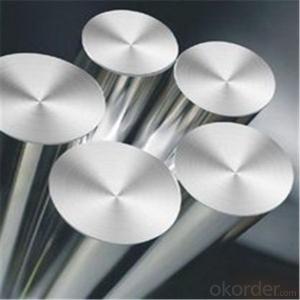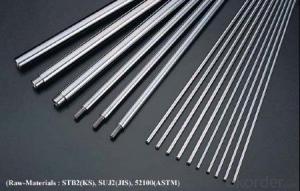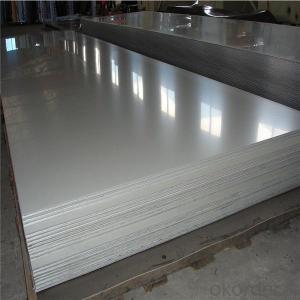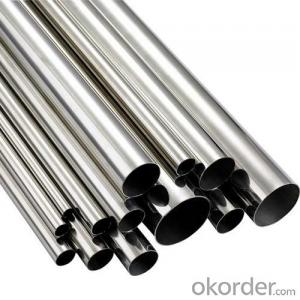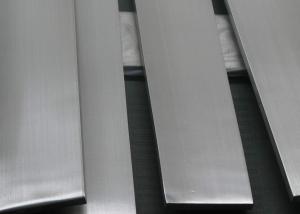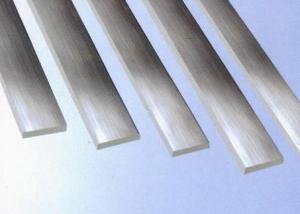316 round stainless steel bar price for china
- Loading Port:
- Tianjin
- Payment Terms:
- TT OR LC
- Min Order Qty:
- 100 kg
- Supply Capability:
- 1000 kg/month
OKorder Service Pledge
Quality Product, Order Online Tracking, Timely Delivery
OKorder Financial Service
Credit Rating, Credit Services, Credit Purchasing
You Might Also Like


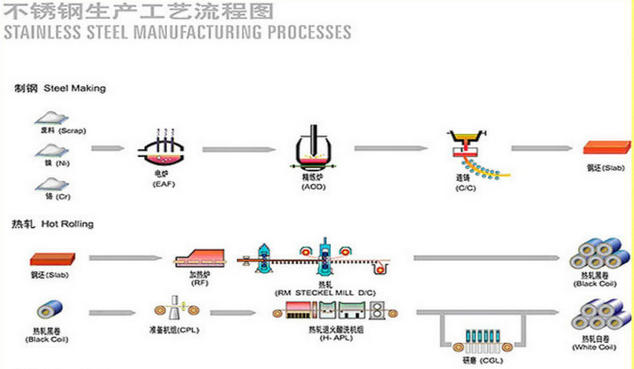
- Q: Can stainless steel pipes be used for both high and low-pressure applications?
- Stainless steel pipes possess the ability to serve in high and low-pressure scenarios. Stainless steel's reputation for its robustness, endurance, and corrosion resistance renders it apt for diverse pressure circumstances. It can endure high pressures unflinchingly, without any distortion or breakage, hence proving to be an optimal choice for high-pressure purposes such as oil and gas pipelines, chemical processing plants, and hydraulic systems. Furthermore, it can be employed for low-pressure applications such as plumbing systems and water supply lines. The adaptable nature of stainless steel pipes enables their usage across an extensive array of pressure conditions, which contributes to their popularity in numerous industries.
- Q: What are the different types of stainless steel pipe tees?
- There are several types of stainless steel pipe tees, including equal tees, reducing tees, and barred tees. Equal tees have three outlets of the same size, while reducing tees have outlets of different sizes to accommodate varying pipe diameters. Barred tees have a branch outlet with a restriction or bar across it, which helps to control flow or reduce turbulence in the piping system.
- Q: What is the welding procedure for stainless steel pipes?
- To achieve a strong and durable joint, stainless steel pipes undergo a specific welding procedure. Typically, the process entails several crucial steps. To begin, it is essential to choose the appropriate welding technique for stainless steel, which is often Tungsten Inert Gas (TIG) welding due to its ability to produce precise and clean welds. Before commencing the welding process, it is necessary to thoroughly clean the stainless steel pipes to eliminate any contaminants like dirt, grease, or oxidation. This can be accomplished using either a degreasing agent or a stainless steel wire brush. Following the cleaning process, the pipes must be aligned and fitted together correctly. It is crucial to ensure that the gap between the pipes remains consistent and even throughout the joint. This can be achieved by temporarily securing the pipes in place using clamps or tack welding. Once the pipes are properly aligned, the TIG welding process can commence. This involves using a TIG torch to create an electric arc between a tungsten electrode and the stainless steel pipes. The intense heat generated by the arc melts the edges of the pipes, creating a fusion between the base metal and the filler material. During the welding process, it is vital to maintain a stable arc length and control the welding speed to achieve a uniform weld bead. Regulating the heat input and controlling the welding parameters can be accomplished by utilizing a foot pedal or a remote control. Throughout the welding process, it is important to safeguard the weld area from contamination. This can be achieved by using shielding gas, such as argon, to establish an inert atmosphere around the weld zone. The shielding gas prevents the weld area from reacting with oxygen and other atmospheric elements that could result in weld defects. Upon completing the welding, it is advisable to perform post-weld cleaning and inspection. This involves removing any slag or spatter that may have formed during the welding process and visually examining the weld for any defects like cracks or discontinuities. In summary, the welding procedure for stainless steel pipes involves cleaning the pipes, aligning and fitting them together, TIG welding with the appropriate arc length and welding speed, shielding the weld area with inert gas, and conducting post-weld cleaning and inspection. By following these steps, a dependable and sturdy weld joint can be achieved for stainless steel pipes.
- Q: What is the difference between 321 and 321H stainless steel pipes?
- The main difference between 321 and 321H stainless steel pipes lies in their carbon content and resulting mechanical properties. Both grades are stabilized austenitic stainless steels with titanium as the stabilizing element. However, 321H contains a higher carbon content compared to 321. The increased carbon content in 321H provides improved high-temperature strength and creep resistance. This makes 321H suitable for applications where elevated temperatures are involved, such as in the manufacturing of heat exchangers, furnace parts, and other high-temperature equipment. On the other hand, 321 stainless steel pipes are commonly used in applications that do not require exposure to high temperatures. They offer excellent resistance to intergranular corrosion and are frequently used in the aerospace industry, as well as for the fabrication of exhaust systems, chemical processing equipment, and other general-purpose applications. In summary, the difference between 321 and 321H stainless steel pipes lies in their carbon content and resulting mechanical properties. 321H is specifically designed for high-temperature applications, while 321 is suitable for general-purpose applications that do not require exposure to elevated temperatures.
- Q: What is the difference between 304J3 and 316J3 stainless steel pipes?
- The main difference between 304J3 and 316J3 stainless steel pipes lies in their composition and corrosion resistance properties. 304J3 stainless steel is a grade of stainless steel that contains 18% chromium and 8% nickel. It is known for its excellent corrosion resistance, high strength, and good formability. This grade is commonly used in various applications, such as food processing, chemical processing, and architectural applications. On the other hand, 316J3 stainless steel is a grade that contains 16-18% chromium, 10-14% nickel, and 2-3% molybdenum. This additional molybdenum content enhances its corrosion resistance, especially against chloride environments. As a result, 316J3 stainless steel is often used in more demanding applications, such as marine environments, pharmaceutical equipment, and coastal structures. In summary, the key difference between 304J3 and 316J3 stainless steel pipes is the composition and the subsequent corrosion resistance properties. While both grades offer good corrosion resistance, 316J3 stainless steel provides superior resistance in chloride-rich environments, making it suitable for more demanding applications.
- Q: Can stainless steel pipes be used for geothermal systems?
- Yes, stainless steel pipes can be used for geothermal systems. Stainless steel is highly resistant to corrosion and can withstand the high temperatures and pressures involved in geothermal applications, making it an ideal choice for these systems.
- Q: Can stainless steel pipes be used for air pollution control systems?
- Yes, stainless steel pipes can be used for air pollution control systems. Stainless steel is known for its corrosion resistance, durability, and high-temperature strength, making it a suitable material for handling corrosive gases and pollutants in air pollution control systems. Additionally, stainless steel pipes offer excellent resistance to chemical reactions and can withstand harsh operating conditions, making them an ideal choice for such applications.
- Q: Difference between stainless steel and steel pipe
- 2. welded steel pipe for different welding process and divided into the furnace pipe welding (ERW) pipe and automatic arc welding, because of the different forms of welding seam welded pipe and spiral welded pipe is divided into two kinds, end its shape is divided into circular welded and shaped (square, flat) pipe.The welded pipe is rolled into the steel tubular to sew or spiral seam welded in the manufacturing method, and is divided into low pressure fluid delivery with welded steel pipe, spiral welded steel pipe, welded steel pipe, welded pipe roll etc.. Seamless steel pipe can be used in various industries, such as liquid, pneumatic, pipeline and gas pipeline. Welding pipes can be used in water pipelines, gas pipelines, heating pipes, electrical appliances, pipelines and so on.
- Q: What is the external coating used for stainless steel pipes?
- Depending on the specific application and requirements, the external coating utilized on stainless steel pipes may differ. Nevertheless, a frequently employed external coating for these pipes consists of either epoxy or polyethylene. This particular coating offers protection against corrosion, abrasion, and various environmental elements. It aids in prolonging the pipes' lifespan and guaranteeing their durability in diverse industries such as oil and gas, chemical processing, and water distribution. Moreover, this coating can also serve aesthetic purposes by providing a sleek and visually pleasing surface finish.
- Q: What's the difference between stainless steel decorative pipes and polished stainless steel pipes?
- Stainless steel decorative tubes are mainly used for decoration, such as railings, staircases, hand guards, railings, windows and so on, the wall thickness is very thin,Polished stainless steel pipe is not the same, the industry can also be used, that is, just made out, some rough, not smooth, so polished under the smooth, according to customer needs.
Send your message to us
316 round stainless steel bar price for china
- Loading Port:
- Tianjin
- Payment Terms:
- TT OR LC
- Min Order Qty:
- 100 kg
- Supply Capability:
- 1000 kg/month
OKorder Service Pledge
Quality Product, Order Online Tracking, Timely Delivery
OKorder Financial Service
Credit Rating, Credit Services, Credit Purchasing
Similar products
Hot products
Hot Searches
Related keywords
